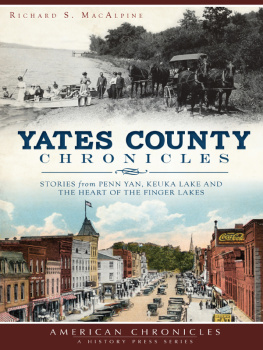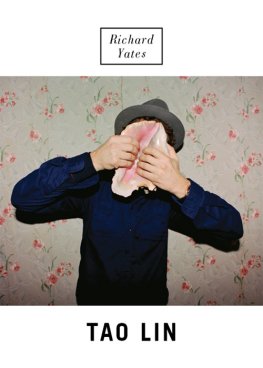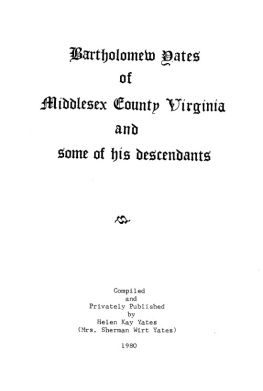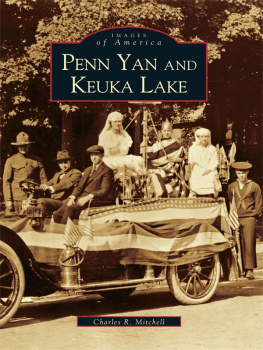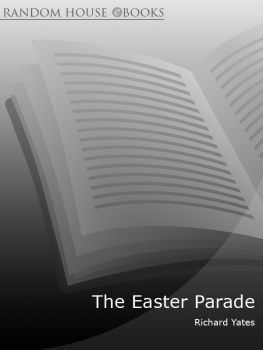
Published by The History Press
Charleston, SC 29403
www.historypress.net
Copyright 2014 by Richard S. MacAlpine
All rights reserved
The majority of photos come from the collection of the Yates County History Center (YCHC) in Penn Yan, New York. Uncredited photos belong to the author.
Front cover, top: Scene along the shores of Keuka Lake, circa 1890. Courtesy of YCHC; bottom: Postcard of Main Street in Penn Yan. Courtesy of YCHC.
First published 2014
e-book edition 2014
ISBN 978.1.62584.822.2
Library of Congress Cataloging-in-Publication Data
MacAlpine, Richard S.
Yates County chronicles : stories from Penn Yan, Keuka Lake and the heart of the Finger Lakes / Richard S. MacAlpine.
pages cm
Includes bibliographical references.
print edition ISBN 978-1-62619-329-1
1. Yates County (N.Y.)--History, Local--Anecdotes. 2. Penn Yan Region (N.Y.)--History, Local--Anecdotes. 3. Keuka Lake Region (N.Y.)--History, Local--Anecdotes. I. Title.
F127.Y3M33 2014
974.782--dc23
2014012331
Notice: The information in this book is true and complete to the best of our knowledge. It is offered without guarantee on the part of the author or The History Press. The author and The History Press disclaim all liability in connection with the use of this book.
All rights reserved. No part of this book may be reproduced or transmitted in any form whatsoever without prior written permission from the publisher except in the case of brief quotations embodied in critical articles and reviews.
CONTENTS
ACKNOWLEDGEMENTS
By far, the major source for all of the articles that I have written for Yates Past, the bimonthly publication of the Yates County History Center (YCHC), are the wonderful resources that are in the Research Center of the Yates County History Center on Chapel Street in Penn Yan. Being the fourth-oldest county historical society in the state of New York (founded in 1860), YCHC has accumulated an amazing collection of files on families who have lived in the county, businesses, places, events, etc. When I get an idea for an article, those files are the first place that I look. Sometimes, its those files that give me the idea for an article to begin with.
As must be apparent from reading my articles, I rely heavily on the local newspapers. For my view, the greatest resources available at the History Center are the bound editions of the Yates County Chronicle, the Chronicle-Express and the Penn Yan Democrat. (My eyes couldnt handle reading them on microfilm.)
The Yates County History Center has a loyal corps of volunteers and three hardworking paid staff members. I would especially like to point out the contribution to this book made by the curator, Charles R. Mitchell. Chuck ran the Photographic Center on Main Street in Penn Yan for many years, until he could see that digital photography was going to change the business significantly. His experience in that business has made him an effective curator, as there our over ten thousand images in the collection. Many of the images used in this book are part of the History Centers collection. Chuck located these for me and prepared them for publication.
There are two people in the community who have proven invaluable to me in writing several of these articles. One is Yates County Historian Fran Dumas. When I had questions or gaps in my research on a local topic, Fran helped, and I appreciate that. The second is Joan Hand of the Penn Yan Public Library. Joan has a special interest in local history and spends much time on microfilm looking over the old newspapers. What she finds, she prints out and puts in files. Those files are a valuable resource and have given me ideas for articles. For example, her research inspired my articles on Leon Lewis, county treasurer James Burns and the Penn Yan Cuban Giants.
For several of these articles, I relied on the input of people who had firsthand knowledge of the topic. I acknowledged most of them in the articles themselves. I would like to add John Barden and Paul Sprague, who helped me with the article on Paul Garrett. John is in Paul Garretts family tree and supplied me with useful information and family photos. Paul Sprague is the curator of the Greyton H. Taylor Wine Museum in Hammondsport, New York.
Finally, I would like to thank my loyal corps of proofreaders for every article that I do for Yates Past, including the ones in this book. They not only correct obvious mistakes but also offer constructive criticism and ask questions that force me to bring more into focus what I am trying to say. They include my wife, Jeanie; YCHC curator Chuck Mitchell and his wife, Melissa; YCHC director John Potter, YCHC administrative assistant Lisa Harper and her mother, Ruth Hartmann; and YCHC collections assistant Mary Collins. For the five years I have been the editor of Yates Past, they have helped me make sure that every issue that goes to the printer is the best quality that it can be.
INTRODUCTION
One thing that I have discovered about myself in retirement is that I have the soul of a researcher. It is one activity that I can get wrapped up in doing and totally lose track of time. I wish I had had just a little bit of that back in my college days, but I didnt. My interest in historical research started to develop during my thirty-four-year career of teaching history at the high school in Oneida, New York. Then I had the interest but not the time. The demands of teaching allowed few opportunities for research during the school year, and summers in the early years were spent taking courses at nearby colleges or painting houses to make ends meet for a growing family.
What sparked my interest in research was an old photograph from my parents collection. The photo showed my grandfather as a young man standing outside a small grocery store with three other men. The sign above the store read Cornell & McAlpine. I remember wondering about that photo when I was a kid. I barely remember my grandfather; he died when I was five. All that my mother could say about the photo was that she thought the store was on Market Street in Corning.
In the summer of 1990, I rented a cottage for our family on Keuka Lake. We hit a string of rainy days, and on one of them, I had the thought of going down to the library in Corning to see if I could learn something about my grandfathers grocery store. I guessed at his age in the photo and placed the photo in the very early 1900s. At the library, I looked at Corning city directories starting in 1900. In the 1902 directory, I found the store under Grocers, Cornell & McAlpine at 26 Market Street. I asked for the 1902 microfilm roll for the Corning Evening Leader and started to read through a column marked City News. In an April 1902 paper, I found this: Cornell & McAlpines grocery is taking on a most inviting appearance and these popular, hustling young men are enjoying a patronage that is good encouragement for their progressiveness. I wondered how long the business lasted because I knew my grandfather moved on to other places. I read every issue until I found the answer in one from April 1903: The grocery firm of Cornell & McAlpine was dissolved yesterday by Mr. Cornell purchasing the interest of Mr. McAlpine. In those issues that I browsed, I found several somewhat creative, and at times deceptive, advertisements for their business. For example, this one at the time of the national coal strike of 1902 that forced the price of coal up to $6 a ton: Big, bold headline: Chestnut Coal $3 a Ton! Small print: We wish we could sell you coal for $3 a ton, but we cant. We are not even in the coal business, but we ARE in the GROCERY BUSINESS! And then they went on to list their specials for that week.
Next page
